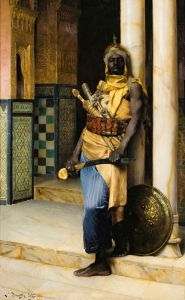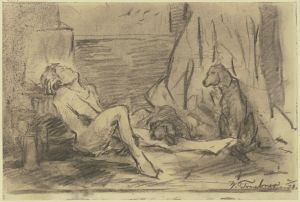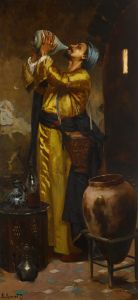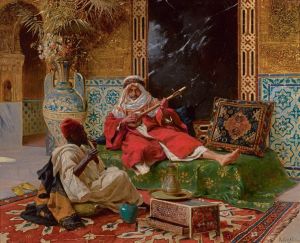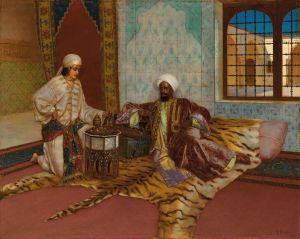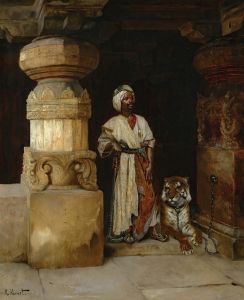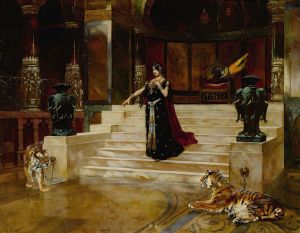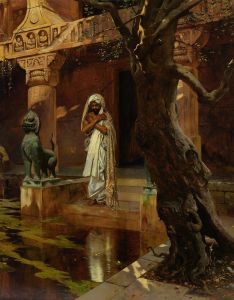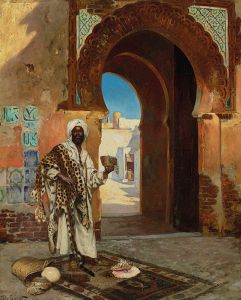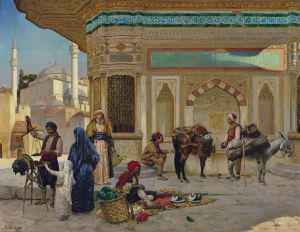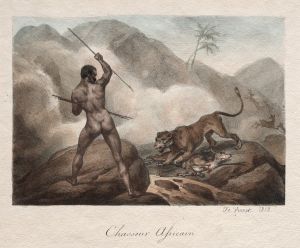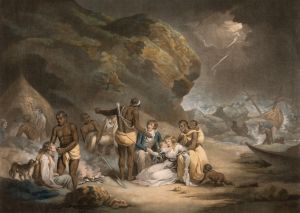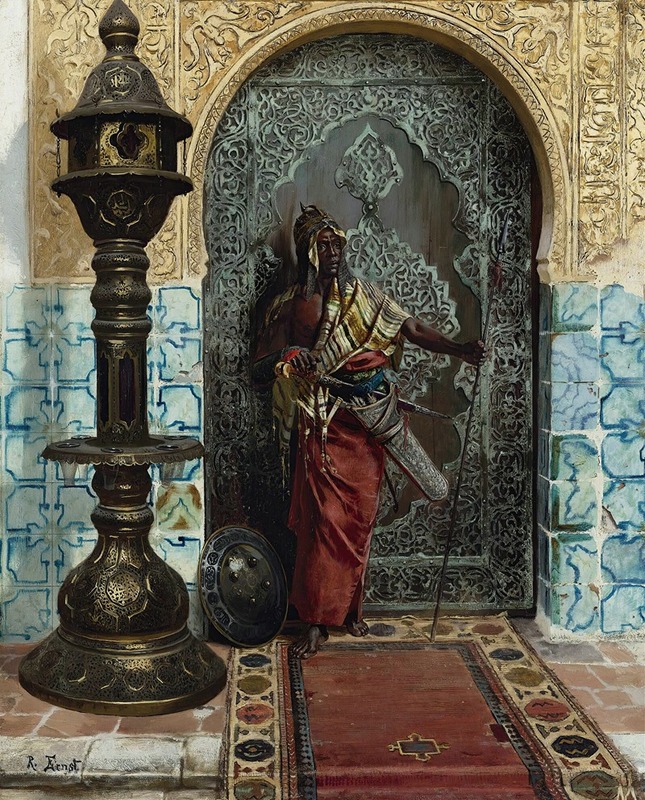
Nubian Guard
A hand-painted replica of Rudolf Ernst’s masterpiece Nubian Guard, meticulously crafted by professional artists to capture the true essence of the original. Each piece is created with museum-quality canvas and rare mineral pigments, carefully painted by experienced artists with delicate brushstrokes and rich, layered colors to perfectly recreate the texture of the original artwork. Unlike machine-printed reproductions, this hand-painted version brings the painting to life, infused with the artist’s emotions and skill in every stroke. Whether for personal collection or home decoration, it instantly elevates the artistic atmosphere of any space.
Rudolf Ernst was an Austrian painter known for his Orientalist works, which often depicted scenes inspired by the cultures and landscapes of the Middle East and North Africa. One of his notable paintings is "Nubian Guard," which exemplifies his fascination with the exotic and his meticulous attention to detail.
"Nubian Guard" portrays a figure that is likely inspired by the Nubian people, who are indigenous to the region along the Nile in what is today southern Egypt and northern Sudan. The painting reflects Ernst's interest in the people and cultures of this region, which was a common theme among Orientalist artists of the 19th and early 20th centuries. Orientalism, as an art movement, involved Western artists depicting scenes from the East, often romanticizing or exoticizing the subject matter.
In "Nubian Guard," Ernst captures the figure with a high degree of realism, showcasing his skill in rendering textures and materials. The guard is typically depicted in traditional attire, which may include elements such as a turban or other headgear, robes, and possibly weaponry, reflecting the attire of guards or warriors from the region. Ernst's use of color and light would have been employed to highlight the richness of the fabrics and the dignity of the figure, a hallmark of his style.
Ernst's works are characterized by their detailed and often idealized portrayal of Eastern subjects. His paintings are noted for their vibrant colors, intricate patterns, and the careful depiction of architectural elements, which he often included to provide context and authenticity to his scenes. "Nubian Guard" would likely feature such elements, providing a backdrop that enhances the viewer's understanding of the setting and the cultural significance of the figure.
The painting is a product of its time, reflecting the Western fascination with the East during the period of colonial expansion. Orientalist art, including works like "Nubian Guard," has been the subject of much discussion and critique in contemporary times, as it often reflects the biases and stereotypes of the era in which it was created. However, it also serves as a historical document, offering insight into the ways in which Eastern cultures were perceived and represented by Western artists.
Rudolf Ernst's "Nubian Guard" remains a testament to his technical skill and his ability to capture the allure of distant lands. While the painting itself is a work of art, it also invites viewers to consider the broader context of Orientalism and the cultural exchanges between the East and West during the 19th century. As with many Orientalist works, it is important to approach "Nubian Guard" with an understanding of its historical context and the perspectives it represents.





